Pallet Changing Machine: What’s the Best Way to Swap Frozen Goods Pallets?
Handling frozen goods presents a unique set of challenges. You are in a constant race against the clock, where every moment a product spends outside a temperature-controlled environment risks its quality and safety. A common but critical problem is dealing with a damaged, unhygienic, or incorrect type of pallet. Trying to swap it manually is slow, physically demanding for your team, and dangerously increases the risk of product spoilage. Imagine an entire pallet of valuable frozen seafood or premium ice cream starting to thaw on the loading dock because of a clumsy, time-consuming manual transfer. This isn't just a logistical hiccup; it's a direct hit to your profits, customer trust, and brand reputation. But there is a better way. What if you could exchange a problematic pallet in less than 60 seconds, without manual lifting and while keeping the product securely stacked and frozen? This is exactly what a specialized pallet changing machine is designed to do, transforming a major operational vulnerability into a smooth, automated, and reliable process.
The best and most efficient way to swap frozen goods pallets is by using a dedicated pallet changing machine, such as a pallet inverter or a pallet pusher. These machines securely clamp the entire load, then either rotate it 180 degrees or gently push it from the old pallet to the new one. This method is superior because it is incredibly fast, minimizes the product's exposure to ambient temperatures, eliminates the risk of worker injury from manual handling, and protects the goods from damage during the transfer.
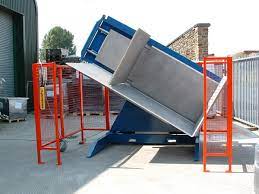
This solution might sound straightforward, but selecting the right machine is critical. The "best" way isn't a one-size-fits-all answer. It depends heavily on the specific type of frozen goods you handle, your facility's layout, and your operational workflow. Throughout my career, from my early days as an engineer on the factory floor to establishing my own packing machine company, SHJLPACK, I’ve seen countless businesses grapple with this. I've helped clients analyze their needs and select solutions that delivered real results. Let’s dive deeper into the specifics so you can make an informed decision that protects your products and boosts your bottom line.
Why is a specialized pallet changer necessary for frozen goods?
You might be looking at your budget and thinking a standard pallet changer could work for your cold storage facility. It’s a common thought, but one that often leads to problems. A machine not designed for sub-zero temperatures can quickly become a liability. The constant condensation, ice buildup, and extreme cold can make standard materials brittle and cause mechanical or electrical systems to fail right when you depend on them most. I’ve seen it happen. A standard machine installed in a freezer environment can seize up, disrupting your entire logistics chain. This isn't just an inconvenience; it's a full-blown operational crisis. It can stop your shipping and receiving lines, lead to costly delays, and result in significant product loss. A specialized pallet changer, however, is built from the ground up to thrive in these harsh conditions. It uses the right materials and components to ensure it works reliably every single time, protecting your people, your product, and your profits.
A specialized pallet changer is essential for frozen goods because it is specifically engineered to operate reliably in sub-zero environments. Standard machines fail due to issues like hydraulic fluid thickening, sensor malfunction from ice, and material brittleness. A cold-rated machine uses appropriate materials like stainless steel, low-temperature components, and sealed electronics to ensure consistent performance, maintain the integrity of the cold chain, and guarantee worker safety.
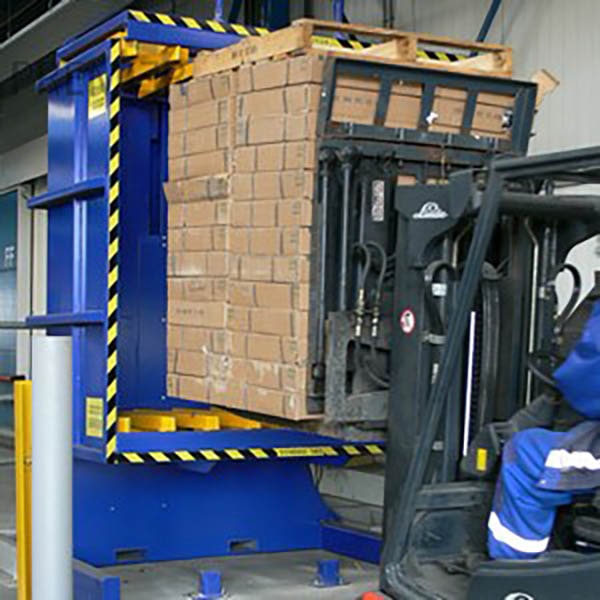
The Harsh Reality of Cold Environments
A freezer or cold storage warehouse is one of the most demanding industrial environments for any piece of machinery. You're not just dealing with the cold itself, but with the effects of temperature cycling. Every time the freezer door opens, warmer, humid air enters and creates condensation on every surface, including your equipment. This moisture then freezes, creating ice that can jam moving parts, block sensors, and accelerate corrosion on unprotected metal. Manual pallet swapping in these conditions is also incredibly risky for employees. The risk of slips and falls is high, and handling heavy, frozen loads can lead to serious back and muscle injuries. The cold also increases the risk of frostbite during prolonged manual tasks. A machine designed for this environment mitigates these risks by automating the most dangerous part of the job.
Technical Superiority of Cold-Rated Machines
What makes a machine "cold-rated"? It comes down to smart engineering and material selection. I always advise my clients to look at the specifications closely. Instead of standard carbon steel that will rust quickly, these machines often use stainless steel or hot-dip galvanized steel for their frames and product-contact surfaces. This prevents corrosion and meets hygienic standards. The hydraulic system, which provides the power for clamping and lifting, uses special low-temperature fluids that maintain their viscosity and don't thicken in the cold. Electronic components like sensors and PLC controllers are housed in sealed, heated enclosures to prevent ice buildup and ensure they function correctly. These are not minor upgrades; they are fundamental design choices that determine whether a machine will be a reliable asset or a constant source of downtime.
Protecting the Cold Chain and Your Investment
Ultimately, the goal is to protect the product. A fast, automated pallet swap that takes 60 seconds keeps the product within a safe temperature zone. A manual swap that can take 15-20 minutes exposes the outer layers of the pallet to ambient temperatures for far too long, potentially causing partial thawing and refreezing. This damages product texture, quality, and safety. By investing in a specialized machine, you are investing in process control. You make the pallet transfer a predictable, repeatable, and safe step in your logistics chain.
| Feature | Standard Pallet Changer | Cold-Rated Pallet Changer | Why It Matters for Frozen Goods |
|---|---|---|---|
| Frame Material | Painted Carbon Steel | Stainless Steel or Galvanized | Prevents rust and corrosion from condensation. |
| Hydraulic System | Standard Oil & Hoses | Low-Temperature Fluid & Hoses | Ensures fluid flows freely and machinery operates smoothly. |
| Electronics | Standard Unsealed | Sealed / Heated Enclosures | Protects sensors and controls from ice and moisture damage. |
| Safety | Basic Guarding | Light Curtains, Safety Mats | Enhanced safety for operators working in cold, potentially slippery conditions. |
| Longevity | Reduced Lifespan | Extended Lifespan | Built to withstand the harsh environment, offering better long-term ROI. |
How do pallet inverters work with frozen products?
The concept of taking a full, heavy pallet of frozen goods and flipping it completely upside down can be unnerving. I understand the hesitation. Business owners and warehouse managers often ask me, "Will it crush my boxes? What if the load isn't stable and everything collapses when it's inverted?" These are critical questions, because a failed transfer could mean thousands of dollars in damaged product and a major cleanup operation. A poorly executed inversion is a disaster waiting to happen. The good news is that modern pallet inverters are not brute-force machines. They are precisely engineered systems designed to handle this exact task with finesse and security. They use carefully controlled clamping pressure and a smooth, deliberate rotation to secure the load from multiple sides, ensuring that even solid, heavy, or irregularly stacked products are transferred without any shifting, crushing, or damage.
A pallet inverter works with frozen products by using two powerful, adjustable clamping plates that press against the top and bottom of the load to hold it securely in place. The entire unit, including the clamped load and pallet, then rotates a full 180 degrees. This brings the original pallet to the top, where it can be easily removed. A new pallet is placed on top of the inverted load, and the machine rotates back 180 degrees, gently setting the product down on its new base.
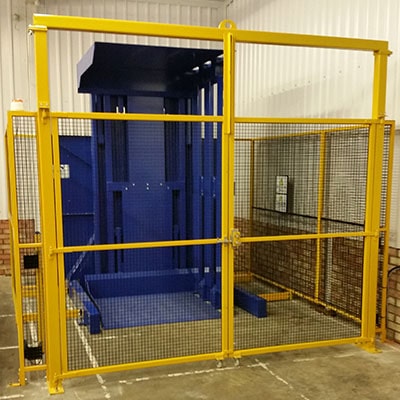
The Inversion Process, Step-by-Step
Let's demystify the process. From an operator's perspective, it's remarkably simple, which is the mark of good engineering.
- Loading: A forklift places the full pallet into the inverter's loading bay.
- Clamping: The operator initiates the cycle. The top clamping plate lowers to touch the top of the load, and the side walls may also engage. The machine applies a pre-set, adjustable amount of pressure—just enough to secure everything without causing damage.
- Inversion: The machine smoothly rotates the entire clamped load 180 degrees. The movement is controlled and steady, not jerky or fast, to prevent load shifting.
- Pallet Exchange: The original pallet is now on top, accessible and easy to lift off. The operator places the new destination pallet onto the inverted load.
- Return: The machine rotates back 180 degrees, and the clamps release. The load is now sitting perfectly on the new pallet.
The entire cycle is typically completed in about one minute.
The Critical Role of Clamping Pressure
The "secret sauce" of a good pallet inverter is its ability to manage clamping pressure. Frozen goods are solid and heavy, but the packaging can often be fragile cardboard. Too much pressure will crush the boxes, while too little will allow the load to shift during rotation. High-quality inverters use hydraulic systems with pressure relief valves and allow operators to easily set different pressure levels for different product types. I remember a client in the frozen bakery industry who was worried about crushing cartons of delicate pastries. We calibrated their machine to apply the absolute minimum pressure needed, and they were able to transfer loads perfectly without a single damaged box. This level of control is what separates a professional-grade machine from a basic one.
Inverter vs. Pusher: Which is Right for You?
The pallet inverter is not the only solution. Another common type is the pallet changer or "pusher" style machine. This type clamps the load from the sides, lifts it slightly, and then a pusher wall gently slides the entire load from the old pallet onto a new pallet waiting beside it. There is no rotation involved. This can be a better option for loads that are very unstable, extremely heavy, or sensitive to being turned upside down.
| Factor | Pallet Inverter (180° Rotation) | Pallet Changer (Pusher Style) | Best For... |
|---|---|---|---|
| Mechanism | Clamps top/bottom, rotates load. | Clamps sides, pushes load across. | Inverters are great for robust, boxed, or bagged frozen goods. |
| Load Stability | Excellent for stable, uniform loads. | Better for unstable or multi-layer loads. | Pushers are ideal for open-top containers or layered products. |
| Speed | Very fast, typically under 60 seconds. | Slightly slower, may take 90 seconds. | Inverters win for high-throughput operations. |
| Footprint | More compact and self-contained. | Often requires more floor space. | Inverters are good for tight spaces. |
| Versatility | Can also be used to turn products. | Purely for pallet-to-pallet transfer. | Pushers are more specialized for transfer only. |
What are the key features to look for in a frozen goods pallet changer?
When you decide to invest in a pallet changer, the number of options can feel overwhelming. It's not a simple purchase. Many manufacturers will present you with a long list of features and technical specifications. It's easy to get lost in the details and make a choice that isn't the best fit for your specific cold chain needs. I've seen businesses make this mistake. They either overspend on features they don't need or, worse, they underspend and get a machine that becomes a bottleneck. The wrong machine can lead to frequent downtime for maintenance, cycle times that are too slow for your pace, or even create new safety risks. It becomes an expensive obstacle instead of a solution. The key is to cut through the noise and focus on the features that truly matter for a cold, wet, and demanding environment.
When selecting a pallet changer for frozen goods, the most critical features to look for are the construction material, the quality of the control system, and the comprehensiveness of its safety features. Specifically, prioritize stainless steel or hot-dip galvanized construction to fight corrosion, a PLC-based control system for reliability and adjustability, and integrated safety mechanisms like light curtains and physical guarding to protect your team.
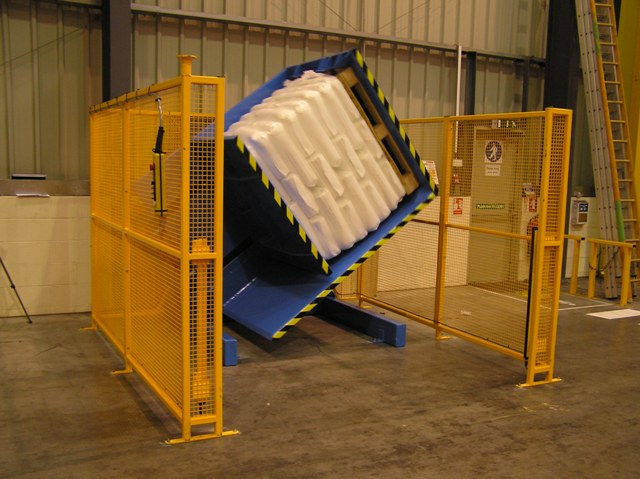
Build Material: The First Line of Defense
In a cold storage environment, condensation is your enemy. It causes rust, which can compromise the structural integrity of a machine and create hygiene issues. A standard painted steel machine will start showing signs of corrosion in a surprisingly short amount of time.
- Stainless Steel: This is the premium choice. It is inherently resistant to rust and is easy to clean, making it ideal for food-grade environments. While the initial cost is higher, its longevity in a harsh environment often makes it the most cost-effective choice in the long run.
- Hot-Dip Galvanized Steel: This is an excellent, more budget-friendly alternative to stainless steel. The process involves dipping the steel components in molten zinc, which creates a durable, corrosion-resistant coating. It's far superior to paint and stands up well to the challenges of a cold, damp warehouse.
Control System: The Brain of the Operation
The control system dictates how the machine operates and how easily your team can interact with it.
- Manual Levers: Some basic models use simple hydraulic levers. While they are simple to maintain, they offer less precision and consistency. The speed and smoothness of the operation depend entirely on the skill of the operator.
- PLC (Programmable Logic Controller): This is the standard for modern, high-performance machines. A PLC-based system provides consistent, repeatable cycles every time. It allows you to program pre-sets for different load types (e.g., "Boxed Fish," "Tubs of Ice Cream"), each with its own clamping pressure and speed. This "push-button" automation reduces the chance of operator error and maximizes throughput. It also allows for easier integration with other automated systems like conveyors or AGVs in the future.
Safety Mechanisms: A Non-Negotiable Priority
Safety should always be the top priority. A powerful machine that clamps and rotates thousand-pound loads needs robust safety systems. Look for a multi-layered approach.
- Physical Guarding: Perimeter fencing is essential to keep personnel out of the machine's operating area during a cycle.
- Light Curtains: These create an invisible barrier of light. If a person or object breaks the barrier while the machine is active, it immediately and safely stops.
- Pressure-Sensitive Mats: Placing these on the floor inside the guarded area ensures that if someone manages to bypass the fence, the machine will not operate as long as they are standing on the mat.
- Emergency Stops: These should be clearly marked and easily accessible from multiple points around the machine.
| Feature | Basic Option (Lower Cost) | Professional Grade (Better ROI) | Why it Matters |
|---|---|---|---|
| Material | Painted Steel | Stainless or Galvanized Steel | Corrosion resistance and hygiene. |
| Controls | Manual Hydraulic Levers | PLC with Touchscreen HMI | Consistency, precision, and automation. |
| Clamping | Fixed Pressure | Adjustable Pressure Presets | Prevents product damage. |
| Safety | Basic Fencing | Fencing + Light Curtains + Safety Mats | Creates a failsafe environment for operators. |
| Integration | Stand-alone Unit | Ready for Conveyor/AGV Integration | Future-proofs your investment for more automation. |
How can a pallet changer improve my cold chain logistics and ROI?
Every significant equipment purchase must justify itself on the balance sheet. It's natural to view a six-figure machine as a major expense. Many business owners I talk to initially categorize a pallet changer as a "nice-to-have" luxury rather than a core operational necessity. This is a perspective I work hard to change, because it misses the bigger picture. Continuing with outdated manual methods isn't free; it's a constant drain on your resources. You are actively losing money every day through hidden costs: the labor hours spent on slow, inefficient transfers; the value of products damaged or spoiled; the high cost of workplace injury claims; and the financial penalty of shipments being rejected by customers because of broken or non-compliant pallets. These seemingly small, individual costs accumulate and have a massive negative impact on your profitability. A pallet changer isn't an expense; it's a strategic investment that delivers a clear, measurable, and often rapid Return on Investment (ROI).
A pallet changer directly improves ROI by slashing manual labor costs, virtually eliminating product damage during transfers, and dramatically increasing warehouse throughput. Furthermore, it prevents expensive workplace injury claims and ensures you can meet any customer's specific pallet requirements, thus avoiding rejected shipments and strengthening your position as a reliable supply chain partner.
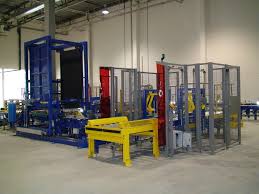
Calculating Your Return on Investment (ROI)
Let's move away from abstract benefits and talk about concrete numbers. The ROI calculation is simpler than you might think. You are essentially comparing the ongoing costs of your current method with the one-time investment and minimal running costs of an automated solution.
- Labor Savings: Calculate how much time it takes for, typically, two employees to manually unstack and restack a pallet. Let's say it's 20 minutes. A machine does it in 1 minute with one operator. If you swap 30 pallets a day, you're saving almost 10 hours of labor daily. Multiply that by your hourly labor rate, and the savings add up fast.
- Product Damage Reduction: Be honest about how much product gets damaged during manual transfers—dropped boxes, crushed packaging, etc. Estimate a conservative percentage, say 1-2% of the value of goods handled. A pallet changer reduces this to virtually zero. For high-value goods, this saving alone can be enormous.
- Workplace Injury Avoidance: A single serious back injury claim can cost tens of thousands of dollars in medical bills, lost time, and insurance premium hikes. By automating this high-risk task, you are investing in a safer workplace and avoiding these catastrophic costs.
Boosting Throughput and Warehouse Efficiency
Beyond direct cost savings, a pallet changer is a powerful tool for eliminating bottlenecks. Your receiving and shipping docks are the gateways to your entire operation. When a truck arrives with a load on damaged pallets, a manual swap can bring everything to a halt, causing delays that cascade through your warehouse. The ability to resolve the problem in 60 seconds keeps everything moving. This increase in throughput means you can load and unload trucks faster, reduce driver waiting times, and process more orders in a day without adding more staff or dock doors. This is a direct increase in your facility's capacity and earning potential.
Strengthening Your Supply Chain Position
In today's competitive market, being a reliable partner is paramount. Many large retailers and food service companies have strict requirements for pallet type and quality (e.g., must be on CHEP pallets, no wood in hygienic zones). The inability to meet these requirements can lead to rejected shipments, chargebacks, and ultimately, lost business. A pallet changer gives you the flexibility to effortlessly transfer goods to any required pallet type. This agility makes you a more valuable and dependable supplier. It turns a potential point of conflict with your customers into an area where you can demonstrate superior capability.
| Cost/Benefit Area | Manual Pallet Swapping | With a Pallet Changer | Annual Financial Impact |
|---|---|---|---|
| Labor (30 pallets/day) | 2 people x 20 min/pallet = 10 hrs/day | 1 person x 1 min/pallet = 0.5 hrs/day | ~ $50,000+ Savings |
| Product Damage | 1% of value handled | < 0.1% of value handled | ~ $10,000 - $100,000+ Savings |
| Injury Risk | High (lifting, twisting) | Extremely Low (automated) | Avoids $50k+ per incident |
| Throughput | Creates major bottlenecks | Smooths dock operations | Increases capacity, reduces fees |
| Customer Compliance | Risky, may lead to rejection | Guaranteed compliance | Secures revenue, enhances reputation |
My Personal Take: It’s More Than a Machine, It’s a Process Philosophy
Throughout my years in this industry, from working on the factory floor to building my own company, I've learned to look at machinery differently. A piece of equipment like a pallet changer isn't just a tool to perform a single task. It's an opportunity to fundamentally fix a broken process.
For many companies, pallet management is a reactive, chaotic part of their operation. A bad pallet arrives, and it triggers a scramble. People are pulled from other tasks, forklifts are tied up, and the entire workflow is disrupted. It's a critical point of failure that is often just accepted as "the cost of doing business."
I see it differently. I see an opportunity to take that unpredictable failure point and transform it into a controlled, predictable, and efficient process. This is the same mindset I see in successful leaders like Javier Morales, who don't just run their plants; they constantly re-engineer them for better performance, whether it's through smart scheduling or waste heat recovery.
Investing in a pallet changer is a statement. It says that you are no longer willing to accept that weak link in your supply chain. You are choosing control over chaos, efficiency over waste, and safety over risk. I remember a client in the food distribution sector who hesitated for a year over the cost. After installation, the plant manager called me. He didn't talk about the money they were saving on labor. He said, "Vincent, my shipping dock is finally calm. Everything just flows."
That's the real prize. It’s not just about swapping pallets. It's about creating a smoother, more resilient, and more profitable operation from the ground up. That’s the philosophy that we build into every machine at SHJLPACK.
Conclusion
Investing in the right pallet changer transforms a critical cold chain vulnerability into a streamlined, efficient, and profitable part of your operation. Choose wisely to protect your product and your people.




